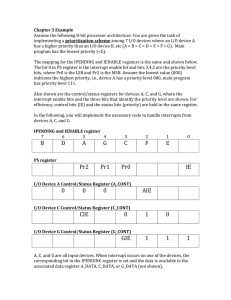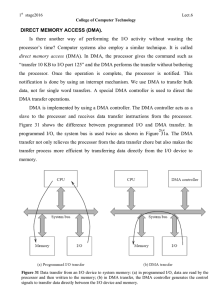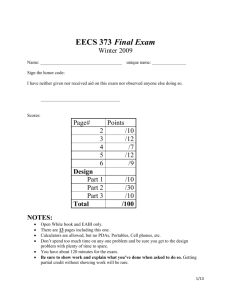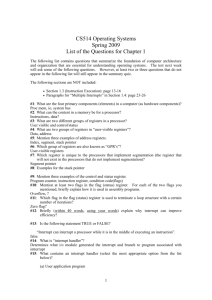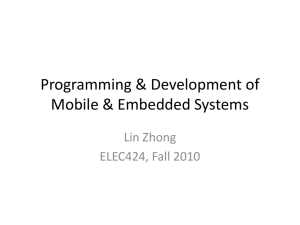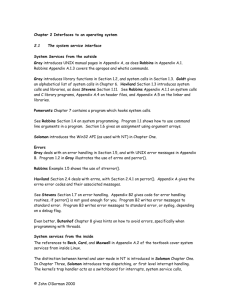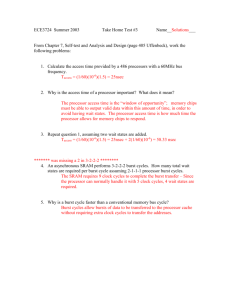transmission parallel
advertisement
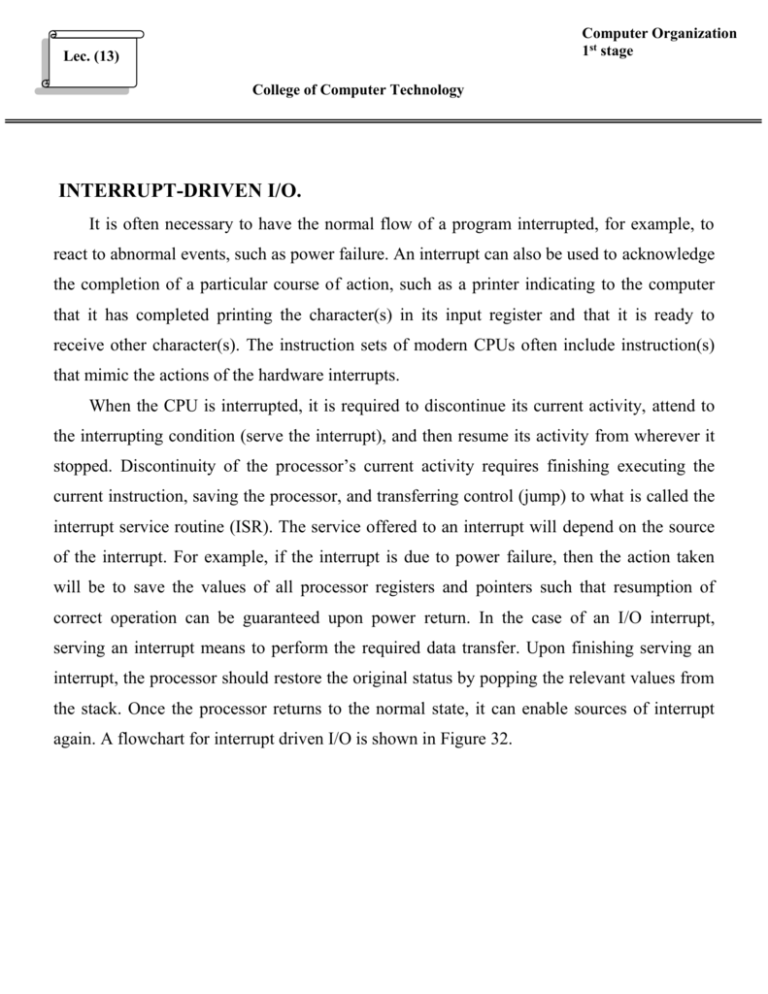
Computer Organization 1st stage Lec.10(13) College of Computer Technology INTERRUPT-DRIVEN I/O. It is often necessary to have the normal flow of a program interrupted, for example, to react to abnormal events, such as power failure. An interrupt can also be used to acknowledge the completion of a particular course of action, such as a printer indicating to the computer that it has completed printing the character(s) in its input register and that it is ready to receive other character(s). The instruction sets of modern CPUs often include instruction(s) that mimic the actions of the hardware interrupts. When the CPU is interrupted, it is required to discontinue its current activity, attend to the interrupting condition (serve the interrupt), and then resume its activity from wherever it stopped. Discontinuity of the processor’s current activity requires finishing executing the current instruction, saving the processor, and transferring control (jump) to what is called the interrupt service routine (ISR). The service offered to an interrupt will depend on the source of the interrupt. For example, if the interrupt is due to power failure, then the action taken will be to save the values of all processor registers and pointers such that resumption of correct operation can be guaranteed upon power return. In the case of an I/O interrupt, serving an interrupt means to perform the required data transfer. Upon finishing serving an interrupt, the processor should restore the original status by popping the relevant values from the stack. Once the processor returns to the normal state, it can enable sources of interrupt again. A flowchart for interrupt driven I/O is shown in Figure 32. Figure 32 Interrupt driven I/O flowchart for a disk transfer. Data Transmission. We can interface I/O devices in one of two basic ways: using a parallel or serial interface. In parallel transmission, several bits are transmitted on parallel wires (n bits are transmitted on n wires in parallel) as shown in Figure 33. On the other hand, in the serial transmission, only a single wire is used for data transmission (one bit at a time). Parallel transmission is faster: we can send n bits at a time on an n-bit wide parallel interface. That also means it is expensive compared to the serial interface. A further problem with the parallel interface, particularly at high data transfer rates, is that skew (some bits arrive early and out of sync with the rest) on the parallel data lines may introduce error prone delivery of data. Because of these reasons, the parallel interface is usually limited to small distances. In contrast, the serial interface is cheaper and does not cause the data skew problems. Figure 33 Two basic modes of data transmission. To detect simple errors during data transmission, a single parity bit is added to the 7-bit data. Assume that we are using even parity encoding. That is, every 8-bit character code transmitted will contain an even number of 1 bits. Then, the receiver can count the number of 1s in each received byte and flag transmission error if the byte contains an odd number of 1 bits. Such a simple encoding scheme can detect single bit errors (in fact, it can detect an odd number of single bit errors). To encode, the parity bit is set or cleared depending on whether the remaining 7 bits contain an odd or even number of 1s, respectively. For example, if we are transmitting character A, whose 7-bit ASCII representation is 41H, we set the parity bit to 0 so that there is an even number of 1s.

